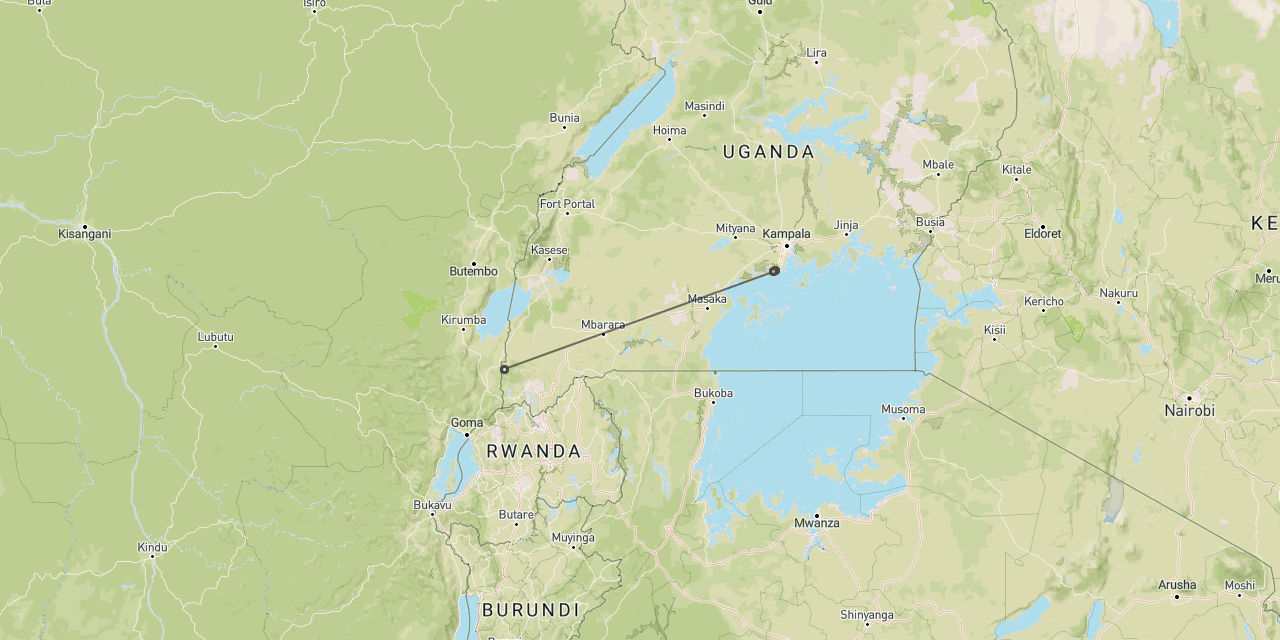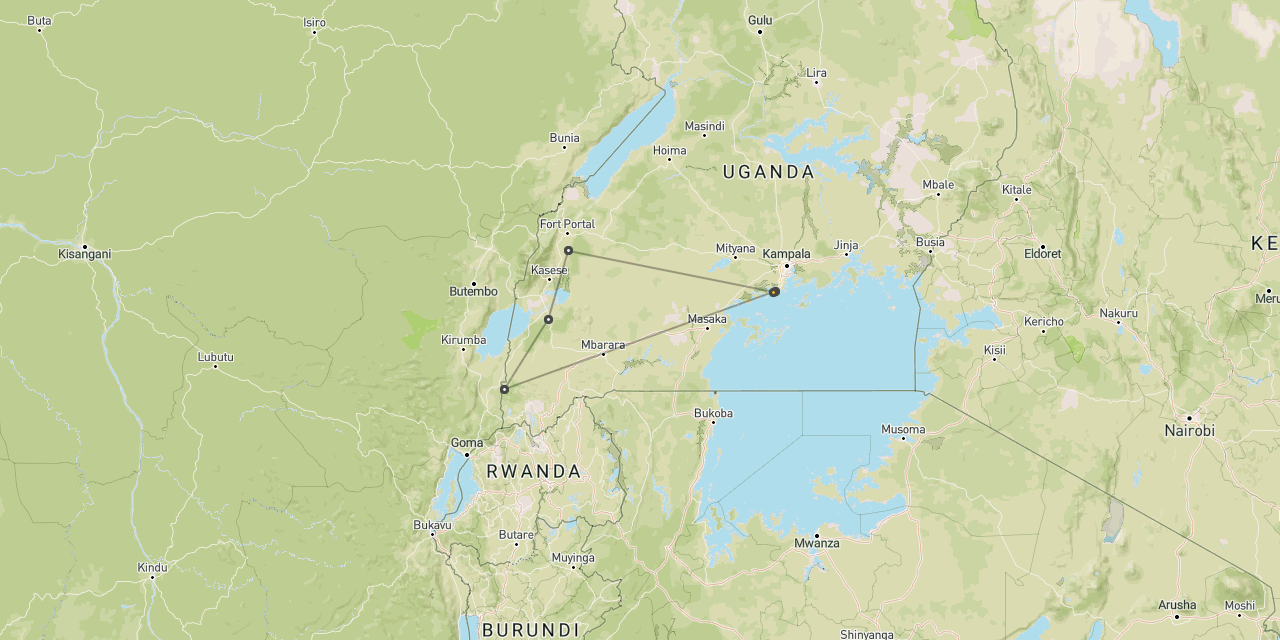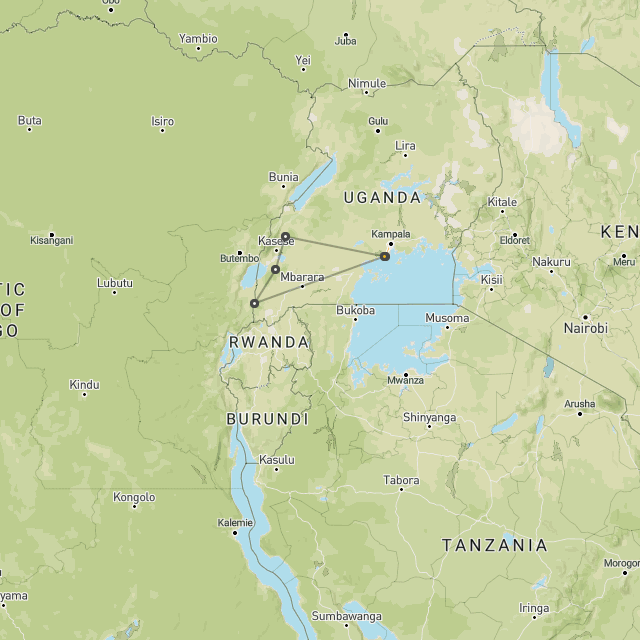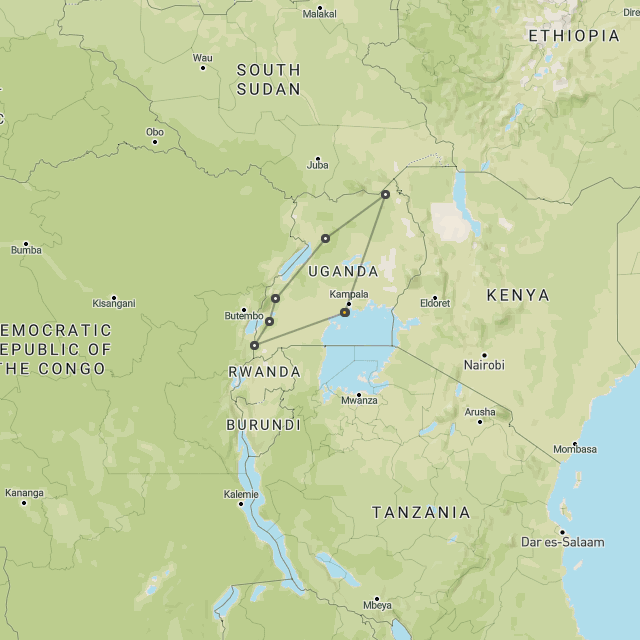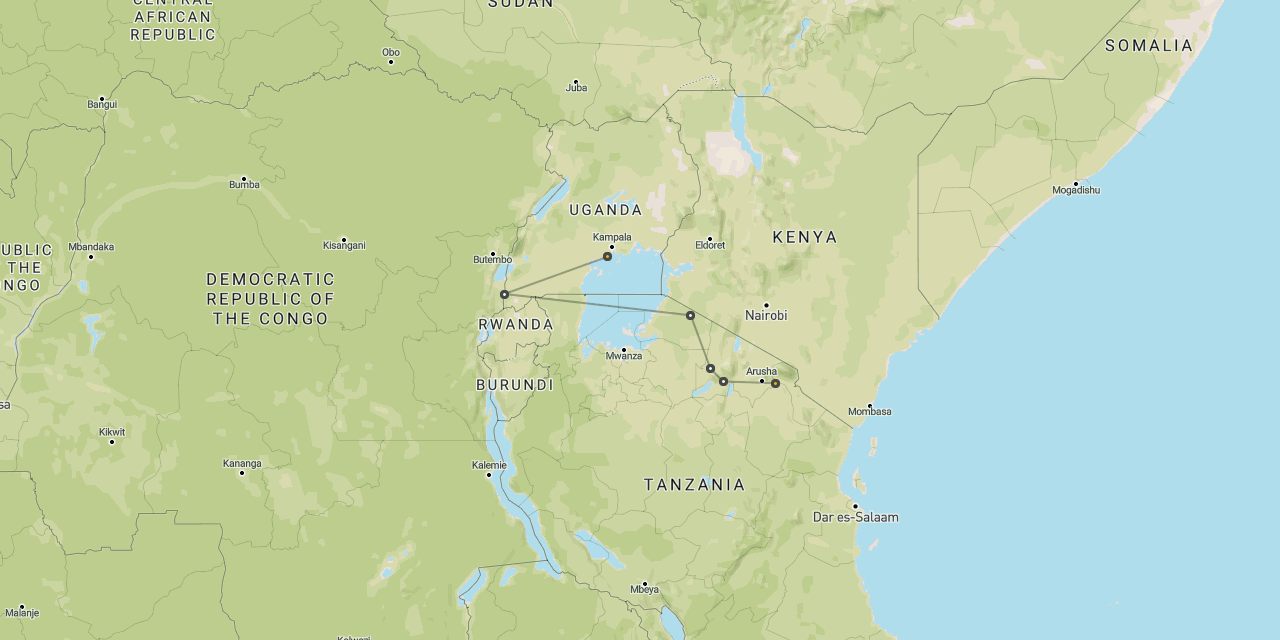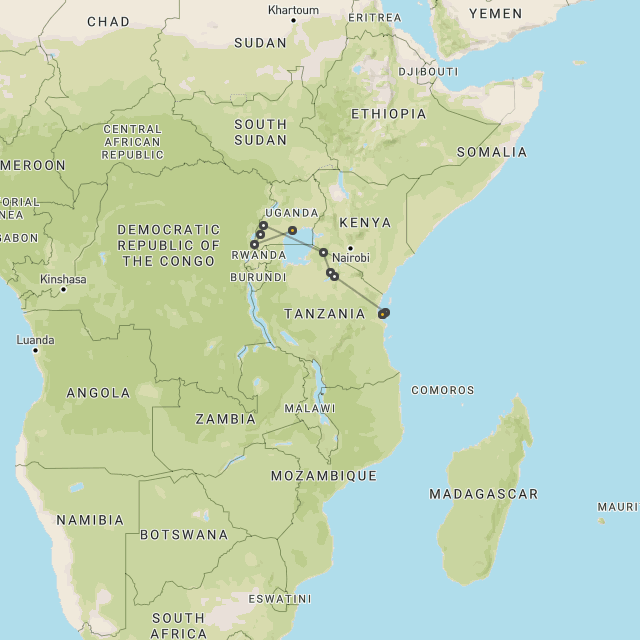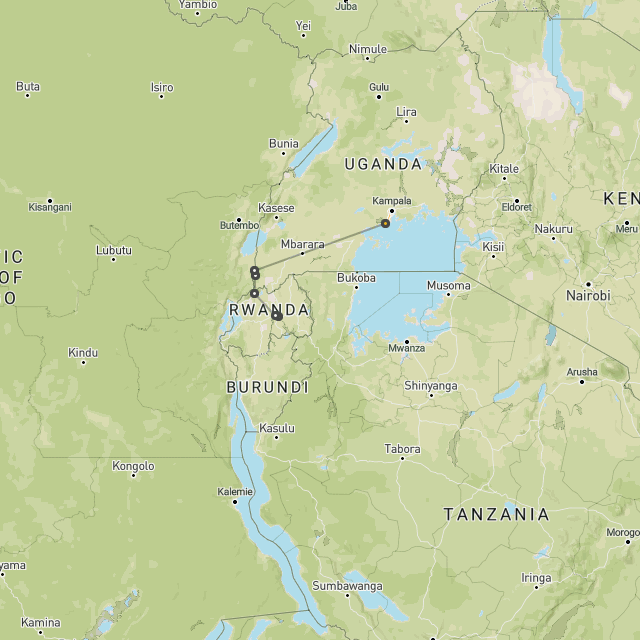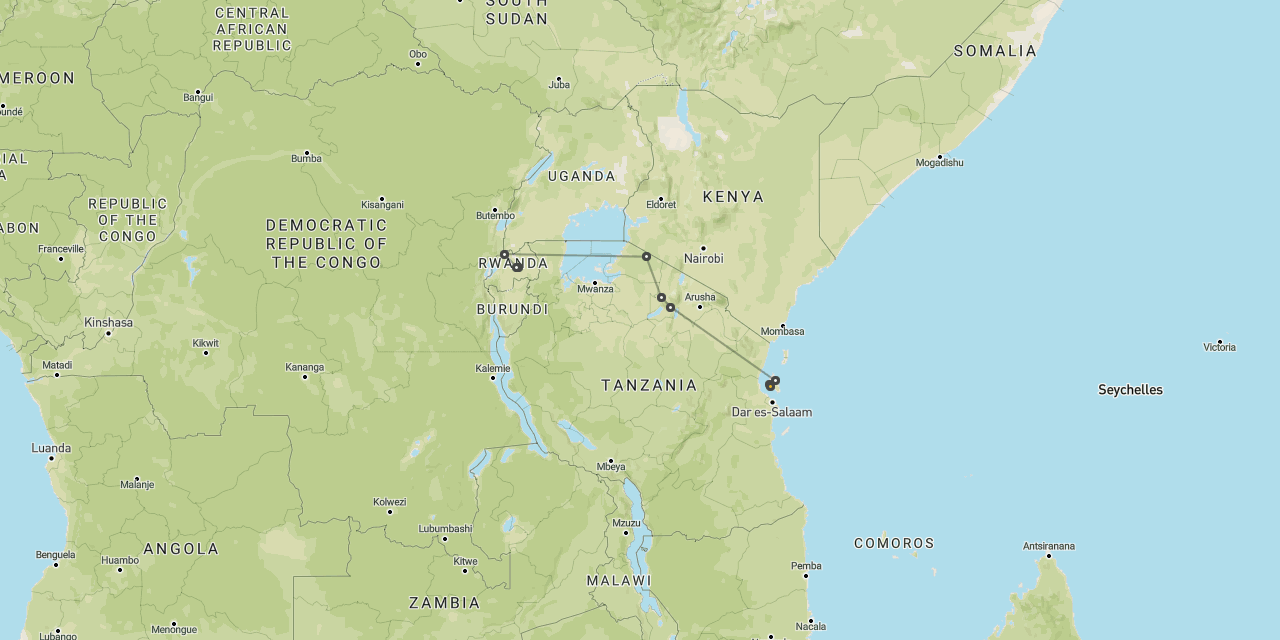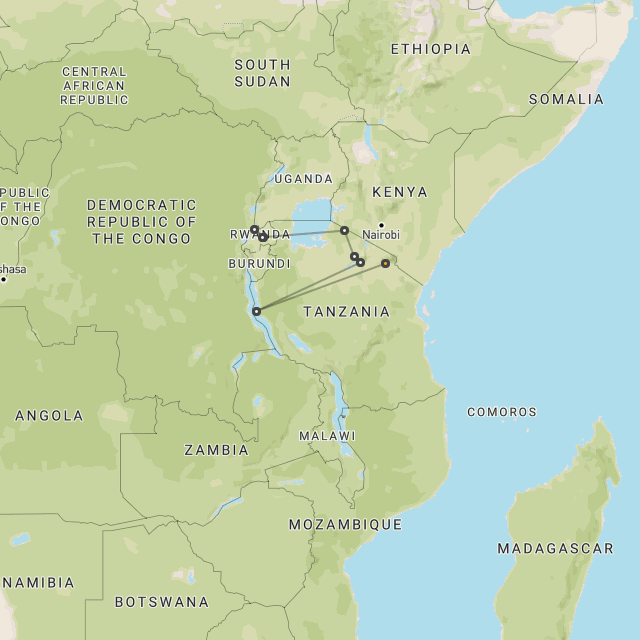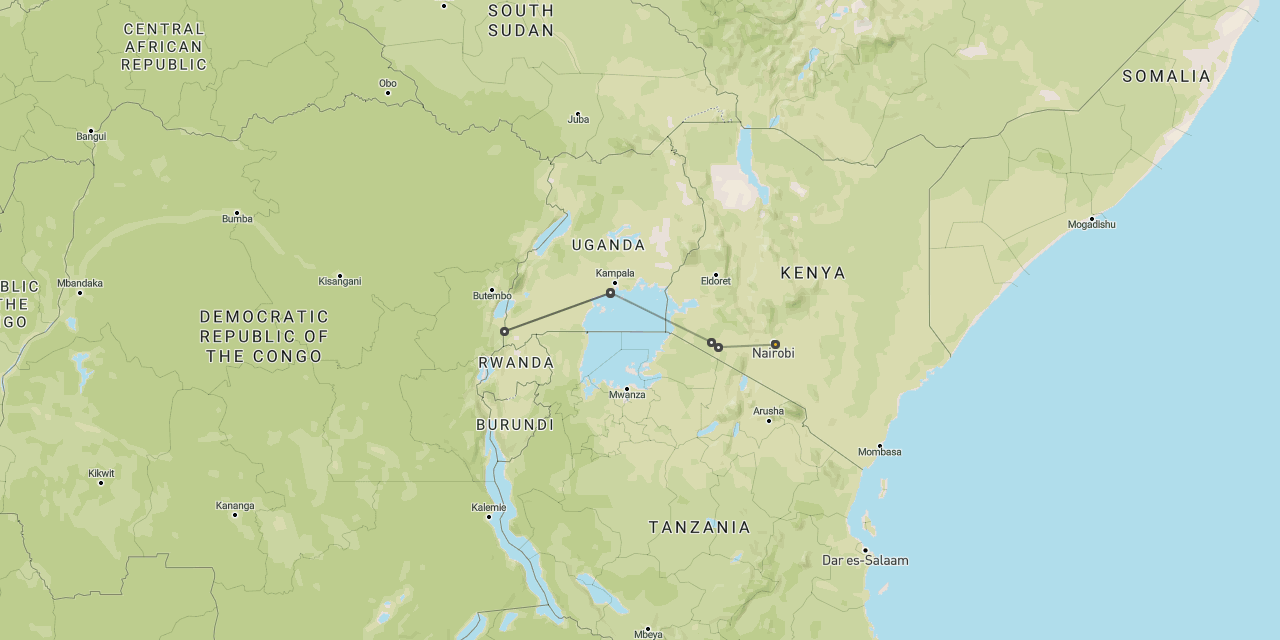
History, conservation and ecology in Bwindi Forest
Bwindi Forest
is one of the oldest
forest reserves in Africa

Key information …
A forest reserve was first established in the Bwindi area in 1932 and covered an area of 207 square kilometres, being expanded to 298 square kilometres in 1942.
In 1964 the reserve was designated as a wildlife reserve, largely to provide additional protection to its mountain gorillas, the new entity being known as the Impenetrable Central Forest Reserve.
In 1991 the area was again reclassified into Bwindi Impenetrable National Park and assumed its current size of 330 square kilometres.
The reclassification of the park had a large impact on the local Batwa pygmy people, who were evicted from the forest and no longer permitted to enter the park or access its natural resources.
The word ‘Bwindi’ means ‘impenetrable’ in the local Runyakitara language and derives from the extensive stands of tightly packed bamboo that are interspersed amongst the larger forest hardwoods and which are virtually impossible to pass through on foot.
The forest is also sometimes rather eerily referred to as ‘The Place of Darkness’.
Gorilla tracking became a tourist activity in April 1993.
one of the oldest reserves in East Africa

The Bwindi Impenetrable Forest is a large primaeval forest located in the western arm of the Great Rift Valley in southwest Uganda.
The topography is very rugged, with narrow valleys intersected by rivers and steep hills. Sixty percent of the park is at altitudes in excess of 2000 metres. The highest elevation is Rwamunyonyi Hill at the eastern edge of the park.
The forest is an important water catchment area, with its network of streams giving rise to a great number of rivers including the Ivi, Munyaga, Ihihizo, Ishasha, and Ntengyere, which flow into Lake Edward. Other rivers flow into lakes Mutanda and Bunyonyi. The forest regulates the flow in these rivers, preventing soil erosion downstream and ensuring that they continue to flow throughout the dry season.
rugged uplands cloaked in an impenetrable forest

Bwindi Impenetrable Forest is one of the most biologically diverse areas on the planet and has been designated a World Heritage Site for its biological significance.
The forest itself is old, complex, and biologically rich. The diversity of species is partly a result of the large variations of elevation and habitat types and may also be because the forest served as a refuge for species during glaciations in the Pleistocene epoch.
The park has more than 163 species of trees, (more than half of all the species found in Uganda), 104 different species of ferns and over 1000 flowering plant species. The rare brown mahogany tree is a particular highlight.
When it comes to animals, the forest contains an estimated 120 mammal species, 348 bird species and more than 220 butterfly species.
There are ten different primate species, including mountain gorillas, chimpanzees, L’Hoest’s monkeys, black and white colobus monkeys, red-tailed monkeys and vervet monkeys.
Notable mammals include elephants, giant forest hogs, side-striped jackals, leopards, golden cats, and civets.
tropical forests with the vast biodiversity

The gorillas are under the protection of the Uganda Wildlife Authority, who provide armed guards to protect the animals from the threat of poaching and terrorism (in the past terrorists have attacked gorillas in an attempt to destabilise the economy).
The areas bordering the park have population densities in excess of 300 people per square kilometre, which is relatively high (similar to the Netherlands for example). Some of the people who live in these areas are among the poorest people in Uganda and over ninety percent of them are dependent on subsistence agriculture.
The high population and poor agricultural practices place a great pressure on the Bwindi Forest, and are one of the biggest threats to the park and its gorillas.
Prior to the declaration of the national park in 1991, local people used to be able to access the forest for hunting, mining, logging and honey collecting. The cessation of access rights caused a great deal of resentment among these communities.
The Batwa pygmy people were particularly badly affected. They used to largely live a traditional hunter-gatherer existence in the forest, fishing and harvesting wild yams. But despite having lived in the area for many generations and having many ancestral sites within the park, their rights to remain were not recognised and they were evicted without compensation.
This is in contrast with the farmers who lived around the forest periphery, who did receive compensation from the government.
These days it is widely recognised that conservation areas can only be truly successful if the local people are supportive of efforts and benefit directly from the project.
Now that Bwindi Forest is managing to attract a significant flow of visitors and generate a decent amount of revenue, there are high hopes that local people can really start to share in the results and become fully supportive of further conservation.
one of the last great strongholds for mountain gorillas

When you are staying in the Bwindi Forest area, clearly your main focus will be on gorilla tracking and other activities inside the national park.
But if you really want to support conservation in the area, it is important that you try to focus some of your expenditure on the local communities.
Most lodges offer a range of options for cultural interaction, especially to visit the Batwa pygmy people, who have a particularly interesting culture.
It is important to realise that these are not simply activities which have been laid on to provide you with something interesting to do in your spare time. They are critical projects which seek to provide income for local people and to engage them in the greater conservation project.
meeting the Batwa pygmies

let us know your thoughts about Uganda
and we will help you create the perfect trip

Extraordinary tailor-made adventures,
from earthy and edgy to easy and extravagant
From around USD 2500 per person, you set the ceiling
Sample Trips
Here are some of our popular trip shapes

Get started on your trip
It’s never too soon to get in touch, we are here to help with every stage of your planning.
Best Lodges
We regularly inspect and photograph all of the the best lodges, to ensure that we always recommend the most suitable options
Key Locations
Take a look around related locations. Click ‘View more’ to explore locations further afield.
